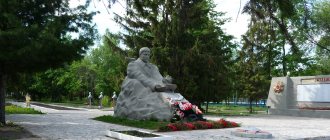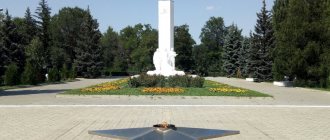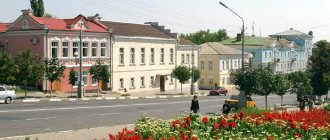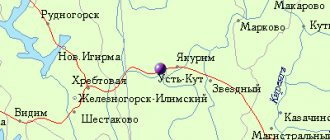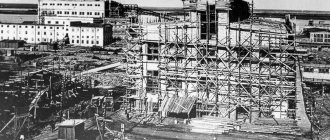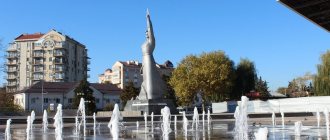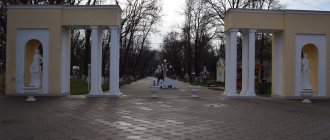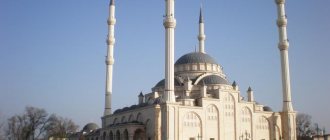There are many cities and regions in Rus' with an ancient and glorious history. And the Ryazan region, Spassk-Ryazansky are rightfully so. This small town is located 55 kilometers from the administrative center of the region - Ryazan, next to the Oka River.
Rus' suffered a lot from the raids of the Tatar-Mongol yoke. The Ryazan principality held off the enemy for a long time. Many heroes of legends and tales, who became famous in the fight against invaders, were born here. But in 1237 the city of Ryazan was completely destroyed by Batu Khan. There is nothing left in place of the city. But in the 15th century, the village of Spasskoye appeared on this land, and nearby the Spassky Zaretsky Monastery. The village became his patrimony; the residents had to provide him with everything he needed. In 1788, the village turned into a city and became the center of Spassky district. At this time, industry began to develop, a tannery and an enterprise for the production of cast iron and iron were built.
Today's affairs
Now Spassk-Ryazansky is the administrative center of one of the districts of the Ryazan region - Spassky. It ranks third in area in the region, has a fairly developed industry and attracts tourists from all over the country. The city has a bakery, a clothing factory, furniture production, a metal products manufacturing plant and a number of other enterprises. And, of course, the oldest production is still in operation - the tannery.
Vvedensky Temple
Near Spassky in the village of Gavrilovskoye there is the Vvedensky Church with chapels: Preobrazhensky and Alexander Nevsky. The church was erected at the end of the 19th century at the expense of parishioners. This is a five-domed temple standing on four pillars. It has a narrow refectory and a multi-tiered bell tower. The temple was closed in the 1940s. The Vvedenskaya Church was returned to believers only at the very end of the twentieth century and was later restored.
On the other bank of the Oka River, opposite the city, in the village of Staraya Ryazan, the Church of the Transfiguration has been preserved . This stone church was erected as a monastery in the second quarter of the 18th century and consecrated in honor of the Annunciation. At this place in the 17th-18th centuries. There was a male Annunciation Monastery, which was closed. The church, later consecrated in honor of the Transfiguration of the Lord, consists of one dome on a quadrangle, and also has a refectory with a St. Nicholas chapel and a hipped bell tower. The temple was closed in the 1930s, and in the second half of the 20th century it was transferred to the “Old Ryazan” archaeological museum. The church was returned and reopened in the mid-1990s.
In the footsteps of history
But, of course, it is not industry that attracts romantics and historians from other regions to Spassk-Ryazansky. And Old Ryazan. After all, it was next to it that Spassk (Ryazan region) was founded. By the way, the second part of the name was assigned to the city only in 1929, in order to distinguish it from other settlements with a similar name (for example, Spassk-Dalniy). But local residents, and other residents of the region, rarely use the full name in speech, still calling the city simply Spassky.
Despite the fact that Old Ryazan was destroyed to the ground by the Tatar-Mongols, archaeologists still find jewelry, household items, tools of those times, and make historical discoveries. Role-playing games – reconstructions of those glorious times – are regularly held here. Members of historical clubs, dressed according to the time, conduct sword fights and recreate the life of ancient villagers. The Old Ryazan settlement is a historical monument of federal significance, which the Ryazan region is rightfully proud of. Spassk-Ryazansky is therefore very attractive for tourists.
Spassk-Ryazansky
Sights of Spassk-Ryazansky
Spassk-Ryazansky is a small city, but with a rich history, and tourists are most attracted to its historical center with perfectly preserved residential and government buildings with more than a century of history.
Here you can see buildings with a stone ground floor and a wooden superstructure, decorated with carved platbands. All this is complemented by stunning views of the Oka River and the surrounding area.
The central square of Spassk-Ryazansky - Victory Square
. Once upon a time it was called Cathedral, and in its center stood the beautiful Transfiguration Church, built with the money of the townspeople in the 19th century.
It was notable for its high bell tower - 69 meters, one of the highest in the Ryazan region. However, in the 20th century, the temple was first closed and then destroyed, and only a memorial stone with the image of the cathedral reminds of its former splendor.
Not far from the square on Sovetskaya Street, in a 19th-century mansion, there is a historical and archaeological museum named after. G. K. Wagner
, formed in 1918.
Here you can see a diorama of Old Ryazan, as well as unique exhibits found during its excavations. The museum also contains many items from peasant and merchant life.
Another noteworthy monument is the wooden cemetery Church of the Ascension
. It was built in the village of Seleznevo, and at the end of the 18th century it was transported to Spassk. Despite the rather fragility of the material, this church turned out to be the only one that has survived and is currently operating in Spassk-Ryazansky.
The most interesting local attraction is, of course, the ancient settlement of Old Ryazan
, located three kilometers from the city on the other bank of the Oka.
Here you can see ancient ramparts and ditches, foundations of stone temples and, of course, enjoy incredibly beautiful views of the surrounding area.
Near the settlement on the banks of the Oka there is the village of Staraya Ryazan. It is notable for the Church of the Transfiguration of the Lord
, built in 1870 at the expense of local landowner A.F. Sterligov. During Soviet times, the temple was closed, it housed a museum, and today it is again handed over to believers.
Five kilometers from Old Ryazan, upstream of the Oka near the village of Nikitino there is another settlement - ancient Olgov
. Here you can see the foundation of a stone church from the 12th-13th centuries.
Another interesting natural monument is located in this place - deposits of the Mesozoic period
, where fossilized remains of ancient shells and squids are easily found.
Another striking attraction of the Spassky district is the estate of S.P. von Derviz in Kiritsy
. It was built at the end of the 19th century and is more reminiscent of a European castle with turrets, bridges and galleries.
During Soviet times, the estate miraculously escaped destruction, although many architectural details were lost forever. Now the estate houses a children's tuberculosis sanatorium, but you can go there on a tour.
A less happy fate at the Golovnin estate
in Krasilnikov. The estate, built at the end of the 17th century along with a temple and a school, is today in a dilapidated state. But its restoration is already underway, and in the future it is planned to open a museum of the famous Verderovsky-Golovnin family in the estate building.
Another old estate - D. P. Saltykova
- or rather, what is left of it is located in the village of Fedotevo, Spassky district.
This place is also famous for the fact that the miraculous Fedotievskaya Icon of the Mother of God
- one of the most revered shrines of the Ryazan land. A church was built at the site where the icon was found.
A notable place in the Spassky district is the village of Izhevskoye
, stretched along the road for 7 km. Conveniently located on the way from Spassk to Kasimov, it actively developed, and by the middle of the 19th century there were already more than 7,000 inhabitants. Izhevskoye is the birthplace of K. E. Tsiolkovsky; here is the house where he was born and a museum dedicated to him.
Where else is worth a look in the Spassky district - this is the village of Isady
, one of the oldest settlements in the Ryazan region. It was here that the famous “Princely Congress in Isady” took place in the 13th century, and Prokopiy Lyapunov, who led the first militia against the Polish-Lithuanian invaders at the beginning of the 17th century, was born here.
In 1636, his descendants built the Church of the Resurrection of Christ in the village, which has miraculously survived to this day and is recognized as an architectural monument of federal significance.
Under the protection of UNESCO
However, this is not the only reason for popularity and interest. The fact is that the area near the city is a world heritage. The Oksky Biosphere State Reserve is located here. UNESCO recognized it as one of the 14 best objects of this type. And in Russia this is the only place that meets all the requirements of this organization. The reserve has a rich flora and fauna; many animals and plants are listed in the Red Book. It hosts research and experimental work, preserves typical natural complexes, and operates nurseries for cranes and bison.
There are also two lakes in this region that are protected by the state as a natural heritage - Dubskoye and Kovyazhnoe.
In addition to natural monuments, the city of Spassk-Ryazansky has the most interesting G. K. Wagner Museum. It represents a unique historical and archaeological collection of things found during excavations in Old Ryazan.
Temple of the Ascension
Only the Ascension Church has survived. It was erected in a cemetery at the end of the 18th century. This is a wooden single-domed cathedral with a high bell tower. Built in the classicist style, the church is a quadrangle with a decorative dome on it. It has side columns, as well as an altar with five sides and a refectory. The cathedral is paneled and decorated with classical decor. It was closed in the 1930s, but church services resumed after the war.
City of Spassk-Ryazansky, Ryazan region
There are many cities and regions in Rus' with an ancient and glorious history. And the Ryazan region, Spassk-Ryazansky are rightfully so. This small town is located 55 kilometers from the administrative center of the region - Ryazan, next to the Oka River.
Rus' suffered a lot from the raids of the Tatar-Mongol yoke. The Ryazan principality held off the enemy for a long time. Many heroes of legends and tales, who became famous in the fight against invaders, were born here. But in 1237 the city of Ryazan was completely destroyed by Batu Khan. There is nothing left in place of the city. But in the 15th century, the village of Spasskoye appeared on this land, and nearby the Spassky Zaretsky Monastery. The village became his patrimony; the residents had to provide him with everything he needed. In 1788, the village turned into a city and became the center of Spassky district. At this time, industry began to develop, a tannery and an enterprise for the production of cast iron and iron were built.
Spassky Museum
The museum in the city of Spassk was opened in 1918. His tasks included preserving the estates of local nobles, as well as works of art and antiquities . Also, at the beginning of its existence, there was a main task - the preservation of the Old Ryazan settlement. It was closed several times, part of the funds were transferred to the city.
In 1967, the newly opened museum in the merchants' shop received the status of a local history museum. Only in the 1980s did he move to his current location - a two-story merchant mansion built at the end of the century before last.
In the 1990s, it received the name of a native of the city of Spassk, Doctor of Arts - Georgy Karlovich Wagner. It has different departments: archaeological and paleontological. The Nature Hall features representatives of the local fauna.
The museum contains items from merchant and bourgeois life of the pre-revolutionary period. There is a unique diorama of Old Ryazan. In it you can see the city before the Mongol invasion.
Across the river is the ancient settlement of Old Ryazan . Its area is about 70 hectares, and the land is elevated above the Oka River by 45 meters. This is the former capital of the Ryazan principality and one of the largest cities of Ancient Rus'. Only defensive ramparts and the remains of an ancient church have survived to this day. During the invasion of Batu Khan's army, Ryazan fell. And only at the end of the 18th century, Empress Catherine II renamed Pereslavl-Ryazan to Ryazan. The ruined settlement became a field. And at the end of the 18th century, a local resident plowed a golden crown on the site of the ancient capital. And at the beginning of the 19th century, the famous “princely barmas” were found on the local hills. A little later, the graves of the Ryazan princes were excavated and already at the end of the century the remains of the Boris and Gleb Cathedral were excavated. Since 1926, archaeological work has been carried out by a joint expedition of the Ryazan Historical and Architectural Museum-Reserve and the Institute of Archeology of the Russian Academy of Sciences. The main part of the finds ends up in the Ryazan Historical and Architectural Museum-Reserve.
On the territory of Old Ryazan, the remains of the Boris and Gleb Temple of the pre-Mongol period . This church was on six pillars with three apses and also had side porches. Its foundation was discovered at the beginning of the 19th century. Since the 17th century nearby there was a wooden church in honor of the holy martyrs Boris and Gleb. At the beginning of the 20th century, the Boris and Gleb Church was erected on the foundations of the pre-Mongol cathedral. It was dismantled during the war. In 2022, only the remains of the building exist.
Most of the churches in the city and in the surrounding area were destroyed and not restored, but those that have survived, as well as existing museums, carry out their educational tasks and are the cultural and spiritual centers of Spassk and its surroundings.
